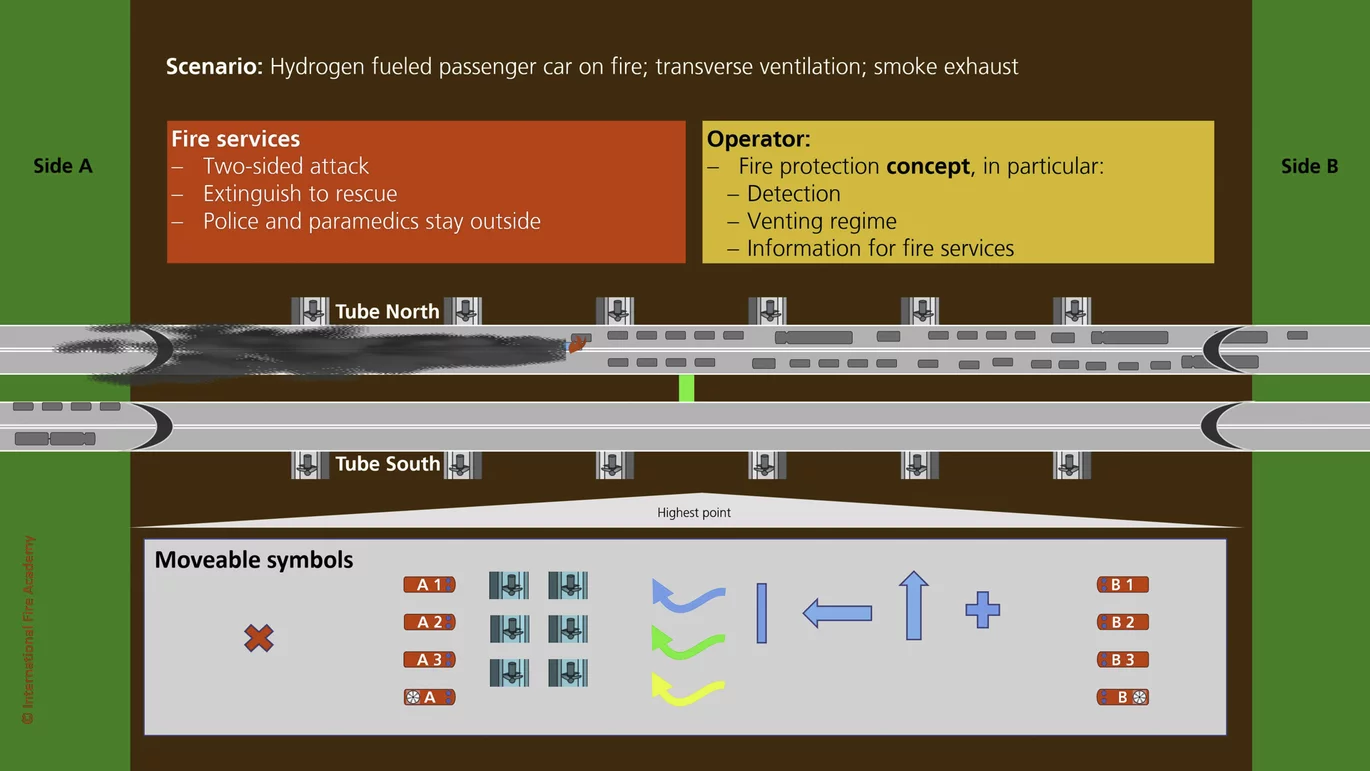On 5 and 6 October 2020, the International Fire Academy organised a workshop on «First responding to incidents with hydrogen-powered vehicles». It was possible to formulate relevant issues for scientific research on the specific problems of incident operations. The International Fire Academy conducted the workshop online and connected it for the first time with another first: The IFA took the chance to use the proven tabletop exercise technique in a video conference.
Deployments in incidents involving hydrogen-powered vehicles
The aim of the workshop was an intensive exchange of knowledge and experience among members of the fire, the paramedic, and the police services as well as scientists from the European research project «HyTunnel-CS». The task of the project is to carry out pre-normative research for the development of hydrogen-powered vehicles that can be operated in underground transport systems at the same or even lower risk than fossil-powered vehicles. Detailed information on the project «HyTunnel-CS» is given in the magazine report «What to do when hydrogen vehicles burn?»
Covid-19 forces use of new formats
Initially, the workshop for first responders was to take place in Balsthal in May 2020 in order to give the scientists involved in the project insights into the practical work in firefighting operations in railway and road tunnels of fire services. However, due to the covid-19-related travel restrictions alone, a workshop with participants from many European countries was not feasible during the first lockdown. Instead, a two-day «Virtual Workshop» was offered for the first time in this format. The first day was used to exchange knowledge and experience. On the second day, more than 100 participants dealt with detailed tactical questions.
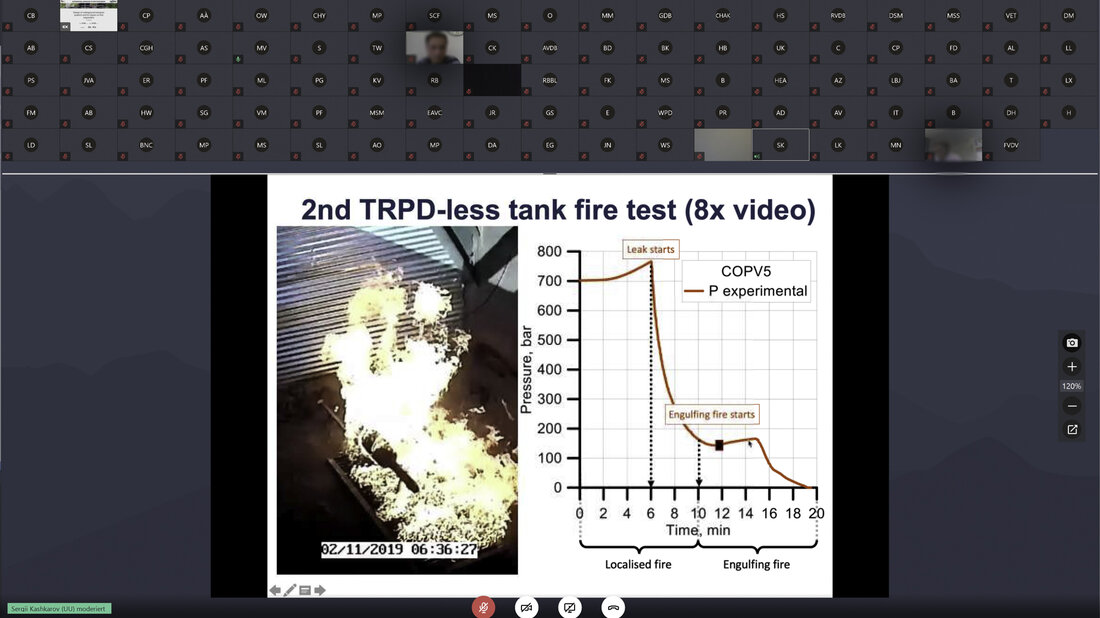
Tabletop exercise technique reveals unknown issues
The International Fire Academy uses the tabletop exercise technique for both development work and training. The reason is that it makes it possible to visualise all imaginable situations and to consistently play through various tactical options and their effects within a short period of time. During the «Virtual Workshop», for example, the tabletop exercise technique helped to make it clear that the conditions during a firefighting operation are entirely different from those in a research laboratory. For example, scientists can accurately calculate explosion risks using mathematical models. At the fire site, however, there is neither the necessary data available nor the time to perform complex calculations that take hours or days even to compute with high-performance computers. So the scientific knowledge must be broken down into simple rules of thumb for incident commanders, which scientist and fire services can only do together. In turn, it presupposes that the scientists understand why fire service incident commanders do not want to know many things «very precisely», but only «sufficiently accurate».
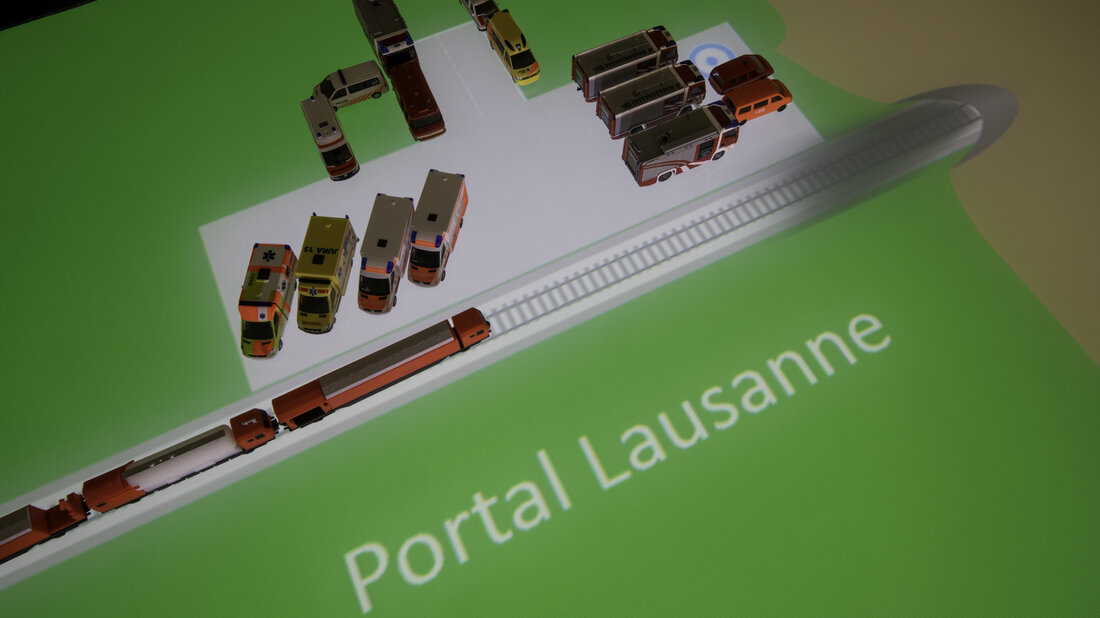
From the tabletop to the screen
In the Tactics Centre in Balsthal, operational situations are projected from below onto glass tables with short-distance projectors. The operational measures are visualised with model vehicles and game figures or sketched with board-markers. For the «Virtual Workshop», this method had to be made online-capable. As a test, the scenarios for this were presented on PowerPoint slides. In order to be able to sketch on the slides live, they were not shown in the presentation but in editing mode. It allows questions and proposed solutions to be drawn in front of everyone and symbols for vehicles, emergency personnel, fans, etc. to be moved.
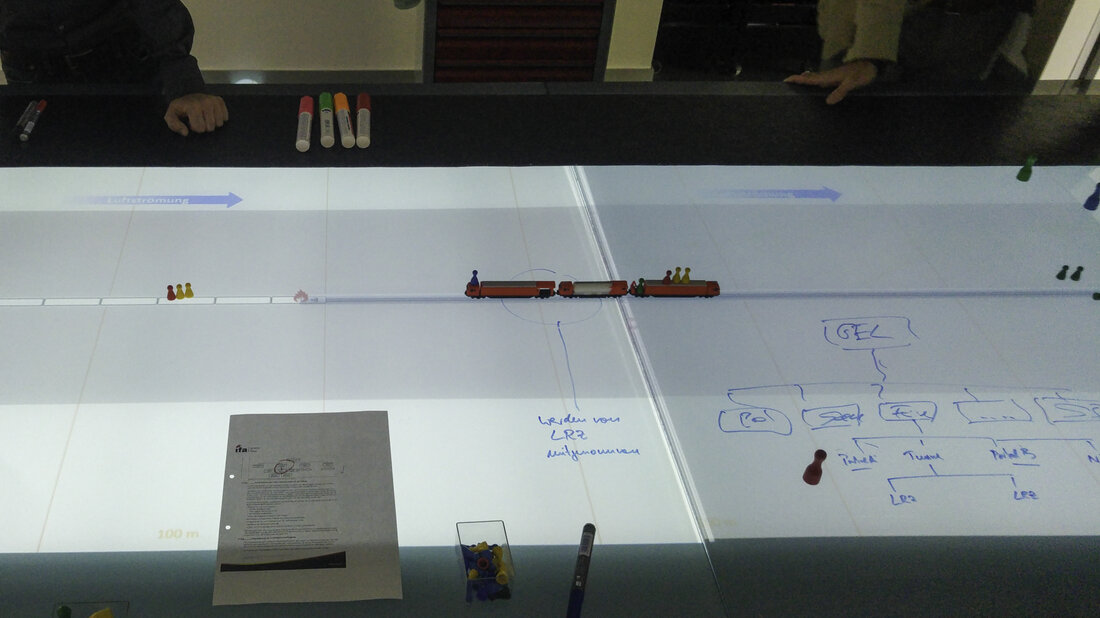
Interaction possible, but it is not easy
The tabletop exercise technique lives decisively from the interaction of the participants. The easier it is for them to visualise their ideas, approaches and decisions, the more intensive the communication between all those involved. You do not just say «We are going to do a fire attack!» but draw the line and with it convey to the others a number of detailed decisions, e.g. from which fire apparatus and on which side of the fire the hose line should be laid down and how many firefighters should be deployed. This opportunity for interaction should also be offered during the «Virtual Workshop». Therefore, a video conference system was used in which the moderator can allow participants to control the mouse and keyboard remotely. It allows a participant to edit the scenario themself.
However, this option was little used at the «Virtual Workshop». Further experiments with this technique showed that the inhibition threshold for interaction decreases if the participants can test the interaction in their time for themselves in advance. Basically, however, the ability to change the scenarios quickly was found to be very helpful by the participants of the «Virtual Workshop», even if the moderator mostly used it.
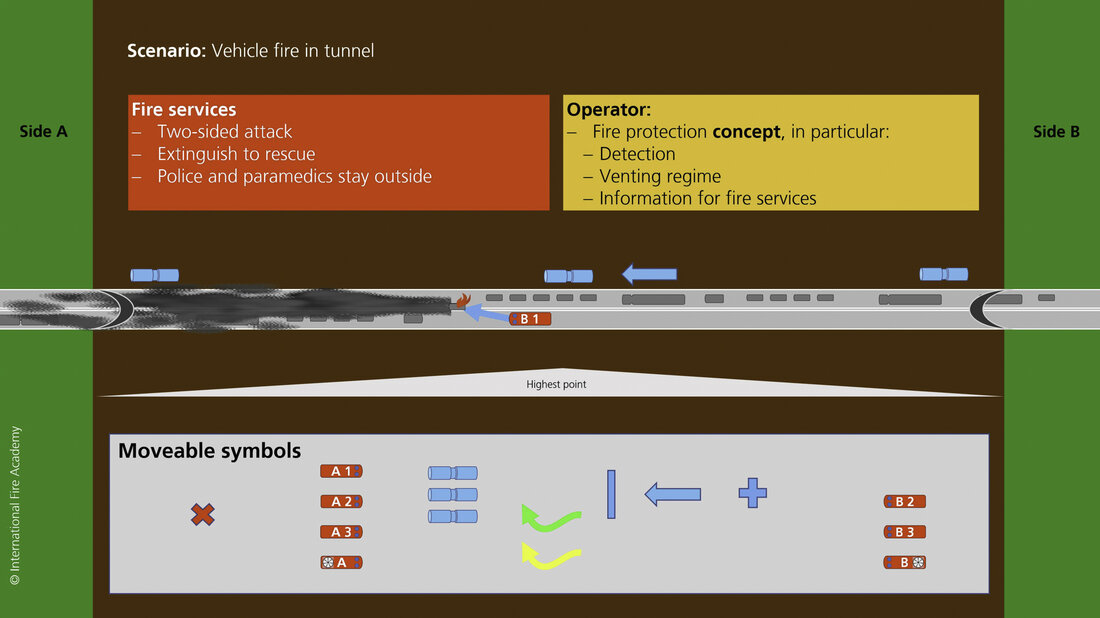
Main topic: gathering information
One of the essential tasks of the «Virtual Workshop» was to find out which issues on the part of the fire services require scientific investigation and which technologies would be helpful from the point of view of the fire services.
Here it became clear once again that the development of a special procedure for hydrogen-powered vehicles only makes sense if the emergency personnel can immediately recognise under all conditions that they are dealing with a hydrogen-powered vehicle. That is why the international fire service association CTIF (Comité Technique International de prévention et d'extinction du Feu) campaigns for an automatic transmission of the identification number of the damaged vehicles to the incident command. Because each vehicle has a unique Vehicle Identification Number, or VIN for short, which also provides information about the vehicle's drive type.
Another important finding: From the point of view of many scientists involved in the «HyTunnel-CS» project, the risk of explosion from novel hydrogen tanks could be significantly reduced, if not excluded. Information on this can be found on the project's website «HyTunnel-CS».
Distance, angle of attack, ventilation regime
Although communication was «only» online, the «Virtual Workshop» enabled very committed discussions, for which the chat channel was also used intensively. Thereby, three topics were dominant: Safety distances, the influence on ventilation systems and the access to the vehicle during a fire attack.
There are very different rules for safety distances for hydrogen-powered vehicles. Ideally, these should be standardised and must be reconsidered in principle against the background of safety-optimised hydrogen technologies.
The extent to which released hydrogen behaves in the various ventilation systems of road tunnels has not yet been conclusively investigated. Here, too, an important task lies for research.
One of the significant challenges from a practical standpoint is the recommendation to attack fires in hydrogen-powered vehicles only from the side and not towards the rear or front. This is to prevent firefighters from being hit by the hydrogen jet flame. However, what should firefighters do if, for example, the vehicle is in an underground car park between other vehicles, and it is only possible to approach it from the rear?
These and other issues will now be summed up as a result of the «Virtual Workshop» into a task package, which will be processed in the further course of the project «HyTunnel-CS» and in the parallel project «Hy-Responder» in the coming months.


